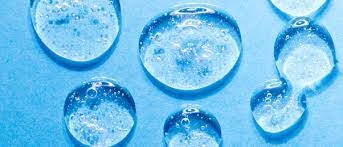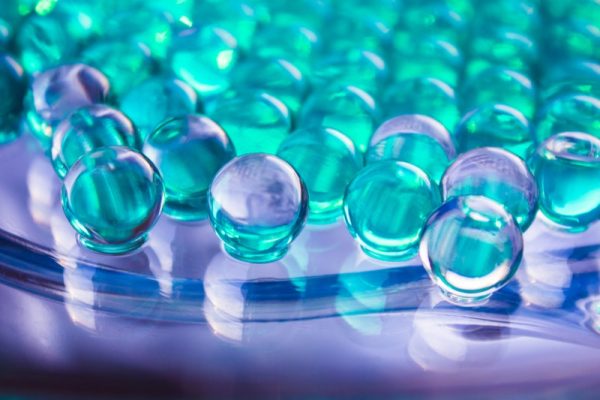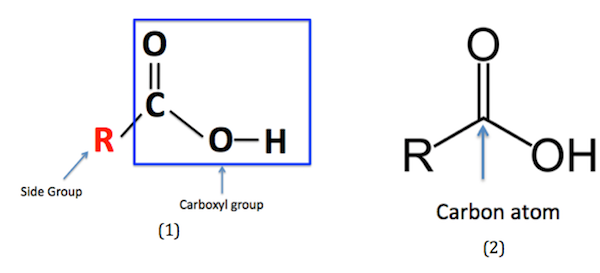Antibacterial Hydrogel Produced Spontaneously
Resistance to antibiotics is one of the greatest obstacles to treating bacterial illnesses. In addition to this, frequent nosocomial infections cause several problems, particularly in hospitalized patients.
In 2019, the Centers for Disease Control and Prevention indicate that more than 700 thousand people die annually from bacterial diseases throughout the globe. This circumstance prompted the creation of alternate options.
Antibacterial materials are perhaps the most promising of these treatments. Antibacterial hydrogels, which are often explored in the scientific literature, are used in several fields, including waste disposal, water treatment, and surface coating, particularly in the biomedical industry.
In this work, it is claimed that an antibacterial hydrogel will be produced.
It is believed that the N-2-hydroxypropyl methacrylamide (HPMA) it contains will provide it with good biocompatibility, making it appropriate for application in different tissue engineering investigations, particularly in wound dressing.
The quaternized 4-vinylpyridine in its structure will give the polymer a positive charge. Thus, it is anticipated that the substance will kill bacteria by a contact-active process by disintegrating the negatively charged bacterial cell wall. By using cryogelation as the manufacturing process, it is hoped that the hydrogel formed would have a macroporous structure.
Therefore, it will be capable of absorbing and destroying bacteria cells like a sponge. In contrast to hydrogels that release antibacterial compounds (biocides) to the environment, it is believed that the antibacterial mechanism’s tissue toxicity will be minimal due to the positive charges in its structure.
The cryogel recommended in this research aims to reduce bacterial infections, prevent illnesses transferred via public contact, and facilitate the treatment of antibiotic-resistant bacterial infections.
If used as a wound dressing, it will prevent secondary infections by providing antibacterial activity surrounding the area, so accelerating tissue healing.
It is believed to contribute to water purification or disinfection when used in water treatment or disinfection, and when applied as a coating material to different medical equipment, it prevents the production of bacterial biofilm and reduces hospital infections.
Hydrogel is a hydrophilic
Hydrogel is a hydrophilic, water-insoluble polymeric macromolecule with a high water absorption capacity; it may be employed in a number of biomedical applications; it is porous, flexible, and cross-linked; and it can be manufactured with a broad range of chemical and physical characteristics.
It may be utilized in the cleansing and purification of water from bacteria, as a tissue scaffold and wound dressing material in tissue engineering, in the removal of pollutants from the environment, in purifying processes, and as an antibacterial agent in the medical area .

Antibacterial hydrogels
Researchers have produced antibacterial hydrogels as an alternate strategy against antibiotic resistance.
Due to the absence of medications such as antibiotics in the substance, resistance is prevented and an efficient antibacterial mechanism is developed.
The diseases caused by antibiotic-resistant bacteria, whose number is on the rise, kill around 13 million people year [5].
The gravity of the situation has elevated the significance of antibacterial material research.
Due to their positive charge, quaternized ammonium groups are commonly utilized in antibacterial hydrogels because they may degrade the negatively charged bacterial cell wall.
For the manufacture of self-antibacterial hydrogels, quaternary ammonium-containing polymers are used. Positively charging the 4-vinylpyridine’s tertiary amine group by quaternization confers antibacterial characteristics.
The polymer N-2-hydroxypropyl methacrylamide (HPMA) is also employed in medication delivery and antibacterial hydrogel applications.
It offers a significant benefit owing to its biocompatibility . In this research, copolymers will be created by combining two polymers.
Thus, the resulting hydrogel will exhibit both antibacterial and biocompatibility features.
To trap bacteria inside its pores, the hydrogel, which is intended to have a contact-active mechanism, must be macroporous. For this reason, cryogelation was selected as the technique for producing the gel.
At very low temperatures, cryogelation is the simultaneous cross-linking of polymer in solution.
Ice crystals behave as a porogen when they freeze in the gaps between polymers
After the cryogelation process, the frozen solution will melt and a macroporous cryogel will form. In our investigation, it was intended to eliminate water from the frozen gel by drying it.
As a result of the research, the aforementioned facts are true.
Utilizing its features, a cryogel with superior biocompatibility, non-toxicity, macroporosity, intrinsic antibacterial activity, and an efficient method will be produced.
Hypothesis
Resistance to antibiotics is one of the greatest obstacles to treating and preventing bacterial illnesses.
Approximately 13 million people die annually from bacterial illnesses.
Different ways are thus attempted to prevent or cure infection.
Antibacterial material research has shown promising findings in this domain.
In this work, macroporous quaternized 4-vinylpyridine (4-VP) and N-2-hydroxypropyl methacrylamide (HPMA) copolymer are suggested to make a positively charged cryogel.
In this situation;Depending on the pH value of its surroundings, 4-VP might exhibit varied chemical and morphological characteristics. The tertiary amine group of the pyridine ring may be positively charged at acidic pH levels and also by quaternization with different substances. In this work, it is projected that quaternizing and positively charging the cryogel would impart it with antibacterial capabilities.
In biomedical research, N-2-hydroxypropyl methacrylamide (HPMA) is one of the most extensively utilized hydrophilic polymers.
It was favored in the thesis research because to its significant characteristics, such as high biocompatibility, non-toxic effect, and reduced surface adsorption.
Since 4-VP has a harmful impact when used alone, it was believed that by synthesizing it as a copolymer with biocompatible HPMA, a material with reduced toxicity may be produced.
The water-soluble crosslinking agent 1-ethyl-3-(3-dimethylaminopropyl)carbodiimide hydrochloride (EDC) activates carboxyl and amine groups. It responds at both room temperature and temperatures below zero.
Crosslinking prevents the creation of undesirable side groups since there is no intermediary.
EDC will accomplish crosslinking in this investigation by connecting the -COOH groups at the end of the quaternary pyridine ring to the amine groups of ethylene diamine in the medium. In addition, since cryogelation will be employed as the manufacturing process, the EDC’s operating temperature is acceptable for this reaction temperature.
Cryogelation was selected as the technique of manufacture.
This is because cryogelation yields hydrogels with macroporous architectures.
Given that the cryogel described in the article is intended to kill bacteria by entrapping them, the gel’s pores should be large. It is believed that the desired characteristic will be acquired in this manner.
Moreover, using this procedure, the cryogel’s liquid absorption capacity will be greater than that of hydrogels.
What is Hydrogel?
Hydrogels are macromolecules that are hydrophilic and insoluble in water.
They are sometimes referred to as semi-open network systems composed of tangled or short chains of different lengths linked by cross-links [1].
In other words, hydrogels are substances formed by polymerizing hydrophilic monomers in the presence of crosslinkers or by crosslinking polymer chains with a water-loving structure.
It was initially reported in 1960 by Wichterle and Lim. For a substance to be termed a hydrogel, its water content must account for at least 10% of its total mass (or volume).
Due to their high water content, hydrogels possess a comparable degree of elasticity as natural tissue .
Hydrogels are also naturally occurring.
For instance, bacterial biofilms and vegetative structures are prevalent in nature and hold large quantities of water.
Gelatin and agar were used in antiquity [4] as essential ingredients.
When exposed to a thermodynamically adequate solvent (water or other biological fluid), these materials, which can contain a considerable quantity of solvent in their pores or interstitial spaces, may expand to their maximal size.
In response to certain physical and chemical stimuli, hydrogels undergo a marked volume phase change or gel-sol transition.
Physical stimuli include temperature, electric and magnetic field, solvent content, light intensity and intensity, while chemical (or biological) stimuli include pH, presence of ions, and particular chemicals.
In most instances, hydrogel conformational changes are reversible.
In other words, the hydrogel substance may revert to its original condition following a response in which the stimulus is withdrawn.
The reaction to external stimuli is determined by the type of the material’s monomer, the charge density, the existence of chains, and the degree of cross-linking.
Hydrogels’ hydrophilicity, water-absorption capacity, and rigidity are determined by the presence of hydrophilic side groups in their main chain (backbone).
Groups such as alcohol, carboxylic acid (-COOH), amide (-CONH2), amino (-NH2), and sulfonic acid (-SO3H) might be provided as examples.

The defining characteristics of hydrogels
Hydrogel qualities, such as desired functionality, reversibility, sterilizability, and biocompatibility, satisfy biological and material criteria for tissue/organ treatment and interaction with biological systems .
Due to these features, hydrogels may also be used in the domains of water purification, ion exchange chromatography, oil recovery, sensor industry, immobilized enzyme industry, agriculture, food packaging, pharmacy, and biomedicine.
Despite possessing beneficial characteristics such as hydrophilicity, swelling capacity, gelability, mechanical strength, porosity, and biocompatibility, hydrogels also have undesirable characteristics .
Limiting the usage of hydrogels include limited solubility, excessive crystallization, certain unfavorable mechanical and thermal characteristics, the existence of unreacted monomers, and the employment of hazardous crosslinkers.
The biodegradability of the hydrogel is determined by the monomer and bond type. Consequently, the biodegradability of hydrogels varies depending on their intended use
Production of Naturally Antibacterial Cryogels
Source :https://steelstandart.com/production-of-spontaneous-antibacterial-cryogels/

